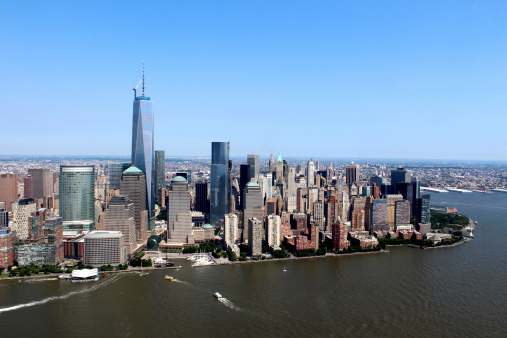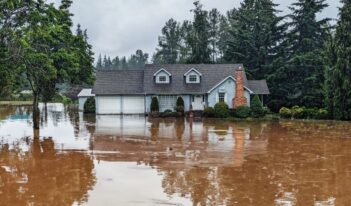
New York City – and most cities – will not be held liable for their coastal adaptation efforts.
Americans who live on the coast are facing greater property damage from storms, which are growing more frequent and intense due to climate change. Some coastal homeowners may seek compensation for their property damage by going to the courts. Can cities be held liable for failing to harden or adapt infrastructure to minimize the ravages of storms?
How the question of liability is resolved may affect what cities will do. Although cities should arguably take more measures to adapt to climate change, potential liability risks may hinder their efforts.
Traditionally, cities have not been held liable for failing to provide protection from natural hazards, including climate change. However, University of Hawaii law professor Maxine Burkett has recently argued that once a city decides to take some measures to adapt to climate change, the city triggers a duty to act reasonably under the circumstances, and its failure to do so can result in liability for negligence.
Under Burkett’s theory of liability, for example, New York City coastal property owners might be able to obtain compensation from New York City for failing to opt for increased adaptation efforts in its climate adaptation plans outlined in PlaNYC and, more recently, A Stronger, More Resilient New York.
Does New York City – and other cities – really have to fear liability?
Not really. Despite Burkett’s claim, cities are unlikely to be held liable for failing to adapt to climate change reasonably under current law. While cities may be liable for negligence in implementing adaptation structures (i.e., levees), most cities have sovereign immunity for discretionary policy decisions, such as which aspects of an adaptation plan to adopt. Even if courts were willing to waive this immunity (which is unlikely), they are still likely to hold that cities that initiate adaptation efforts have acted reasonably, in compliance with relevant common law standards.
For cities to be held liable for adaptation negligence, plaintiffs would need to satisfy the four elements of a tort claim, which are duty, breach of duty, causation, and damages. New York common law, like most state jurisdictions, distinguishes between operational and discretionary actions in assigning legal duties to cities. With respect to the former, New York City can only be held liable for the negligent “design, construction, operation, or maintenance” of structural measures if the plaintiffs prove that the city had a “special duty” to them regarding the structure at issue. (Of course, many states do not have this additional special relationship requirement).
The upshot is that New York City is unlikely to be held liable for structures it put in place before Hurricane Sandy, such as bulkheads and floodgates, even if such structures failed due to negligent design, construction, operation, or maintenance. Plaintiffs would have to show that the city had a “special duty” to them in building these structures. While coastal property owners might argue that such structures were put in place for them, the city would likely counter that such structures were built for the public at large. This same special relationship requirement would also lessen the risk that New York City would face future liability over any of the many new structural measures the city is pursuing as part of its post-Sandy resiliency plan.
Cities are even more clearly protected from liability over discretionary decisions concerning which aspects of an adaptation they plan to adopt. Yet suppose a court was willing to entertain liability if a city failed to implement a more stringent adaptation and resiliency plan, as Burkett argues they might. Even then, anyone suing the city would face an uphill battle. In order to find the city liable, the court would need to make a determination based on either some version of the Hand utility test or another multifactor test. These tests would call for a court to balance the costs of preventing damage against the expected benefits of implementing the adaptation plan.
If a court looked at New York City’s pre-Sandy adaptation efforts in light of a balancing test, it is far from clear that it would find that the city acted unreasonably. When Sandy’s damages, which are estimated at $19 billion, are multiplied by the annual likelihood of the storm’s occurrence, .014%, the resulting expected benefits of better adaptation would be $266 million. The cost of fully implementing PlaNYC is unknown, but just the phase-I initiatives of A Stronger, More Resilient New York have been estimated to cost $19.5 billion. Notwithstanding the ravages Sandy inflicted, a court is unlikely to find it was unreasonable of the city not to spend tens of billions of taxpayer dollars to prevent a couple hundred million dollars in damages.
If a court were to consider a city’s liability using multifactor analysis, the court would consider factors such as the foreseeability of the harm, the city’s ability to mitigate the harm, its actions compared to other cities, the availability of flood insurance, and financial and political limitations.
Applying these factors to New York City’s pre-Sandy adaptation reveals that the city would again be unlikely to be held liable for damages from Sandy. True, the city arguably foresaw or could have foreseen a storm like Sandy. Yet other factors weigh heavily in the city’s favor: the city’s adaptation actions prior to Sandy were well ahead of its peer cities; flood insurance was readily available through the National Flood Insurance Program; the city volunteered to institute adaptation measures; and the city had financial and political factors limiting climate change action.
In the post-Sandy context, although the city can more clearly foresee the next storm’s effects and flood insurance may be more difficult to obtain due to federal legislation reform, the city would still be unlikely to be liable for storm damage. The city’s efforts are on par with its peer cities, the city has volunteered to institute a resiliency plan that costs significantly more than the estimated damages of the next storm, and financial, political, and land use limitations arguably render a more stringent coastal managed retreat strategy less feasible.
Ultimately, New York City, as with other cities, has little to fear in going forward to plan for improved adaptation measures. Common law liability does not create a barrier to exploring adaptation efforts and drawing up plans, even if these plans are not fully implemented. Of course, this also means that liability provides little independent incentive for cities to act aggressively to undertake infrastructure resilience steps. To provide affirmative incentives for these measures, Congress or state legislatures will need to act. Many cities are likely to need additional financing in order to do what is needed to adapt to climate change and protect their citizens from the ravages of future storms.



